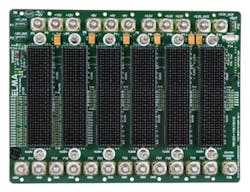Four companies now in place for DARPA program to develop precision micro-gyro sensor for smart munitions
DARPA is asking microelectronics experts at the four companies to develop the micro-scale gyro for single-chip inertial navigation and guidance systems that operate independently of the satellite-based Global Positioning System (GPS) or any other external signals for uncompromised navigation and guidance.
A vibrating-structure gyroscope operates on the principle that a vibrating object tends to keep vibrating in the same plane as its support is rotated. It is less complex and more affordable to design and build than is a conventional rotating gyroscope of similar accuracy.
DARPA scientists are asking Draper, Systron Donner, Northrop Grumman, and Honeywell to develop these kinds of micro sensors as crucial parts of advanced inertial measurement units, and small enough for guided munitions, hand-held devices, and add-in portable guidance, navigation, and control units.
Researchers at the four companies will develop micro-gyros that are not influenced by the kinds of mechanical shocks, temperatures, vibrations, spin rates, and accelerations commonly found in guided munitions. Devices the companies will develop and prototype are expected to operate on no more power than a few tens of milliwatts.
The DARPA MRIG program seeks to create a vibratory gyroscope that measures the angle of rotation in a way that the gyros can extend their dynamic range, as well as eliminate the need for integrating angular rate information. The overall goal is to eliminate an accumulation of errors due to numerical and electronic integration.
DARPA scientists are asking the companies to develop isotropic two-degree-of-freedom resonators -- especially microscopic 3-D shell resonators -- which are spheres, wine-glass shaped structures, or any spatially distributed shells with an axis of symmetry.
Rate integrating gyroscopes have high dynamic range, accuracy due to direct measurement of the angle of rotation, and ability to operate interchangeably in the whole angle and angular rate modes, DARPA experts point out.
The four companies have substantial challenges ahead, as rate integrating gyroscope technology has never been demonstrated on the microscale level. Rate integrating gyroscope miniaturization would offer the potential for developing an inertial navigation system for spin-stabilized missiles, pointing technology for high-G munitions, and azimuth-based target mapping.
For more information contact the Draper Lab online at www.draper.com, Systron Donner Inertial at www.systron.com, Northrop Grumman Electronic Systems online at www.es.northropgrumman.com, Honeywell Aerospace Microelectronics & Precision Sensors (formerly the Honeywell Solid-State Electronics Center) at www.ssec.honeywell.com, or DARPA at www.darpa.mil.
